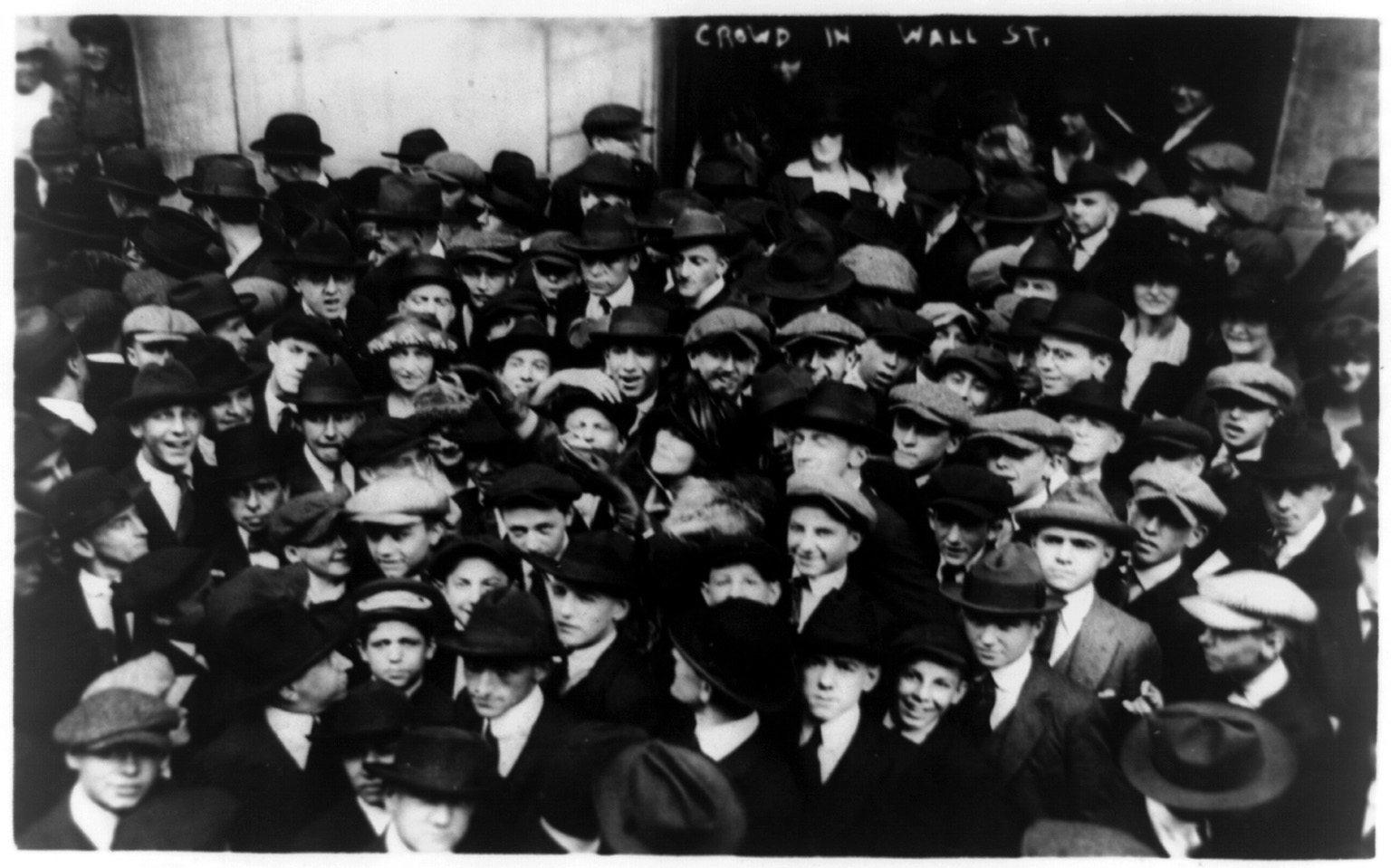Not so long ago, the New York Curb Exchange was a place where small companies could literally sell stock on the street with the aid of what were called curbside brokers. The above 1920 photo from Bain News Service captures the mad scene. More about the Curb Exchange from Inside the Apple: A Streetwise History of New York City:
“Until 1921, the New York Stock Exchange–the largest trading floor in the city–was accompanied on Broad Street by the Curb Market, where outdoor brokers gathered around lampposts and mailboxes to transact business. In many ways, this was the outgrowth of the fact that some traders had not signed the Buttonwood Agreement in 1792, and thus had not been invited into the circle of brokers who moved into Tontine’s Coffee House as part of the official exchange. After the California gold rush brought more capital into New York, the Curb Market expanded to handle more transactions, often for companies deemed too small or too new to gain entrance to the New York Stock Exchange. (Many of these companies–like General Motors–did eventually graduate indoors.) In boom years, the Curb Market was sometimes trading 10 times the number of shares that were being sold on the Stock Exchange’s floor.”


